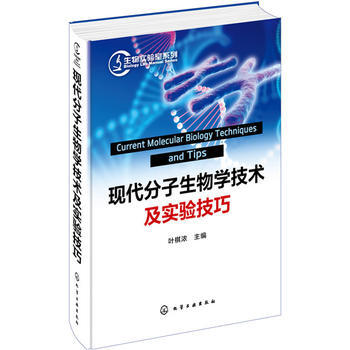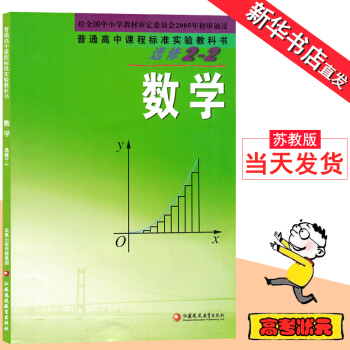

具体描述
基本信息
书名:对称和凝聚态物理中的计算方法
定价:165.00元
作者:(美)巴塔努尼
出版社:世界图书出版公司
出版日期:2012-03-01
ISBN:9787510042812
字数:
页码:
版次:1
装帧:平装
开本:16开
商品重量:1.580kg
编辑推荐
内容提要
本书与其它传统著作不同,巴塔努尼编著的《对称和凝聚态物理学中的计算方法》系统地介绍了现代物理学中三个非常重要的主题:对称、凝聚态物理和计算方法以及它们之间的有机联系。本书展示了如何有效地利用群论来研究与对称性有关的实际物理问题,首先介绍了对称性,进而引入群论并详细介绍了群的表示理论、特征标的计算、直积群和空间群等,然后讲解利用群论研究固体的电子性质以及表面动力学特性,此外还包括群论在傅立叶晶体学,准晶和非公度系统中的高级应用。本书包括大量的mathematica示例程序和150多道练习,可以帮助读者进一步理解概念。本书是凝聚态物理,材料科学和化学专业的研究生的理想教材。
目录
preface
1 symmetry and physics
1.1 introduction
1.2 hamiltonians, eigenfunctions, and eigenvalues
1.3 symmetry operators and operator algebra
1.4 point-symmetry operations
1.5 applications to quantum mechanics
exercises
2 symmetry and group theory
2.1 groups and their realizations
2.2 the symmetric group
2.3 putational aspects
2.4 classes
2.5 homomorphism, isomorphism, and automorphism
2.6 direct- or outer-product groups
exercises
3 group representations: concepts
3.1 representations and realizations
3.2 generation of representations on a set of basis functions
exercises
4 group representations: formalism and methodology
4.1 matrix representations
4.2 character of a matrix representation
4.3 burnside's method
exercises
putational projects
5 dixon's method for puting group characters
5.1 the eigenvalue equation modulo p
5.2 dixon's method for irreducible characters
5.3 puter codes for dixon's method
appendix 1 finding eigenvalues and eigenvectors
exercises
appendix 2
putation project
6 group action and symmetry projection operators
6.1 group action
6.2 symmetry projection operators
6.3 the regular projection matrices: the simplecharacteristic
exercises
7 construction of the irreducible representations
7.1 eigenvectors of the regular rep
7.2 the symmetry structure of the regular rep eigenvectors
7.3 symmetry projection on regular rep eigenvectors
7.4 puter construction of irreps with ds ]1
7.5 summary of the method
exercise
8 product groups and product representations
8.1 introduction
8.2 subgroups and cosets
8.3 direct outer-product groups
8.4 semidirect product groups
8.5 direct inner-product groups and their representations
8.6 product representations and the clebsch-gordan series
8.7 puter codes
8.8 summary
exercises
9 induced representations
9.1 introduction
9.2 subduced reps and patibility relations
9.3 induction of group reps from the irreps of its subgroups
9.4 irreps induced from invariant subgroups
9.5 examples of irrep induction using the method oflittle-groups
appendix frobenius reciprocity theorem and other usefultheorems
exercises
10 crystallographic symmetry and space-groups
10.1 euclidean space
10.2 crystallography
10.3 the perfect crystal
10.4 space-group operations: the seitz operators
10.5 symmorphic and nonsymmorphic space-groups
10.6 site-symmetries and the .wyckoff notation
10.7 fourier space crystallography
exercises
11 space-groups: irreps
11.1 irreps of the translation group
11.2 induction of irreps of space-groups
exercises
12 time-reversal symmetry: color groups and the onsagerrelations
12.1 introduction
12.2 the time-reversal operator in quantum mechanics
12.3 spin-l/2 and double-groups
12.4 magic and color groups
12.5 the time-reversed representation: theory ofcorepresentations
12.6 theory of crystal fields
12.7 onsager reciprocity theorem (onsager relations) and transportproperties
exercises
13 tensors and tensor fields
13.1 tensors and their space-time symmetries
13.2 construction of symmetry-adapted tensors
13.3 description and classification of matter tensors
13.4 tensor field representations
exercises
14 electronic properties of solids
14.1 introduction
14.2 the one-electron approximations and self-consistent-fieldtheories
14.3 methods and techniques for band structure calculations
14.4 electronic structure of magically ordered systems
appendix i derivation of the hartree-fock equations
appendix 2 holstein-primakoff (hp) operators
exercises
15 dynamical properties of molecules, solids, and surfaces
15.1 introduction
15.2 dynamical properties of molecules
15.3 dynamical properties of solids
15.4 dynamical properties of surfaces
appendix 1 coulomb interactions and the method of ewaldsummation
appendix 2 electronic effects on phonons in insulators andsemiconductors
exercises
16 experimental measurements and selection rules
16.1 introduction
16.2 selection rules
16.3 differential scattering cross-sections in the bornapproximation
16.4 light scattering spectroscopies
16.5 photoemission and dipole selection rules
16.6 neutron and atom scattering spectroscopies
exercises
17.1 phase transitions and their classification
17.2 landau theory of phase transitions: principles
17.3 construction and minimization techniques for △φ
exercises
18 inmensurate systems and quasi-crystals
18.1 introduction
18.2 the concept of higher-dimensional spaces: superspaces andsuperlattices
18.3 quasi-crystal symmetry: the notion of indistinguishability andthe clossification of space-groups
18.4 two-dimensional lattices, cyclotomic integers, and axialstacking
bibliography
references
index
作者介绍
文摘
序言
用户评价
这本书的写作风格非常独特,它似乎在刻意避免那种过于“教科书化”的刻板叙事。我注意到作者在章节的过渡和概念的引入上,常常采用一种近乎“哲学思辨”的方式来引导读者思考物理问题的本质。比如,在讲解能带理论的周期性边界条件时,作者没有直接抛出布洛赫定理,而是先探讨了“无穷大”和“有限系统”在量子描述中的差异,这种铺垫让最终结论的得出显得水到渠成,而非突兀的灌输。这种叙事策略对于培养读者的物理直觉非常有益,它鼓励我们去质疑已有的框架,而不是盲目接受。不过,这种风格也带来了一个小小的挑战:对于一些需要快速掌握核心公式的读者来说,可能需要花更多时间去提炼出重点。我个人非常欣赏这种慢热型的讲解方式,它让我感觉自己是在和一位经验丰富的导师进行对话,而不是在被动地接收信息。整体来看,这本书的学术品味很高,它不仅仅是在传授知识,更是在传承一种严谨的科学探究精神。
评分这本书的深度和广度让人印象深刻,但坦白说,它更像是一部为已经有一定基础的物理专业人士准备的“进阶指南”,而不是给普通爱好者入门的读物。我对其中关于拓扑绝缘体部分的论述尤其感兴趣,作者在处理这些前沿课题时,保持了一种极其审慎和严谨的态度。例如,在讨论布洛ೇನೆ菲尔德(Berry phase)时,书中没有满足于给出标准定义,而是追溯了其在不同物理情境下的演化和泛化,这体现了作者深厚的学术功底。然而,对于像我这样主要在经典力学和电动力学领域摸爬滚打的读者来说,要跟上其在高等线性代数和抽象代数上的跳跃速度,确实需要花费大量时间进行“查漏补缺”。我不得不经常停下来,翻阅旁边的参考书来复习那些矩阵群和李代数的性质,才能真正理解作者是如何用对称性来对哈密顿量进行分类和简化。如果说有什么美中不足,那就是某些关键的物理图像的建立,可能还需要更多的示意图来辅助理解,毕竟纯粹的符号操作有时会让人迷失在数学的迷宫中。
评分我主要关注的是数值模拟和计算方法这一块内容,毕竟在现代物理研究中,实验和理论的桥梁往往就是强大的计算工具。这本书在这方面的论述非常实用和详尽,特别是它对密度泛函理论(DFT)的各种近似方法进行了非常细致的对比分析,包括它们的收敛速度、计算成本以及在处理强关联体系时的局限性。作者没有简单地罗列算法,而是深入剖析了每种方法的数学基础和物理假设,这一点非常关键,因为选择错误的近似方法可能会导致完全错误的物理结论。书中给出的伪代码和算法流程清晰明了,我尝试着根据书中的描述,用Python复现了一个简单的两体哈密顿量的对角化过程,结果非常成功,这极大地增强了我对书中内容的信心。虽然这本书没有直接提供成熟的商业软件操作指南,但它提供的底层原理,才是构建任何先进模拟代码的基石。对于想要从“使用者”转变为“开发者”的计算物理学生来说,这部分内容简直是金矿。
评分这本书的封面设计非常吸引眼球,那种深邃的蓝色调和几何图形的组合,一下子就让人感觉到了物理世界的严谨与美感。我本来对理论物理了解不多,更多的是偏向实验操作,但看到这本书的名字,还是忍不住想深入了解一下。初翻目录,发现它涉及的知识点非常广博,从基础的群论概念到具体的数值模拟技术,似乎都有涉猎。我个人比较感兴趣的是关于对称性在材料性质中扮演的关键角色,比如晶体结构和能带结构。作者在引言部分对这个主题的宏观叙述,没有采用那种枯燥的数学推导开场,而是用非常生动的语言阐述了对称性如何“隐藏”在自然界的各种现象背后,这对我这个初学者来说,是一个极好的切入点。那种感觉就像是打开了一扇通往微观世界的窗户,虽然很多细节还需要时间去消化,但至少从直觉上就被这种内在的和谐感所吸引住了。这本书的排版清晰,图表制作精良,即使是复杂的数学公式,也能在清晰的上下文语境中得到解释,这极大地降低了阅读的门槛。我期待后续章节能更深入地讲解如何将这些理论工具应用到实际的凝聚态系统模拟中去。
评分从整体阅读体验来看,这本书的价值远超出了其作为一本专业参考书的范畴。它成功地将两个在传统教育中常被割裂的领域——高度抽象的对称性理论和具体可操作的计算技术——编织成了一个统一的知识体系。我特别欣赏作者在不同章节间建立的隐性联系:一个在第一部分通过群论建立起来的对称性分类,如何在紧束缚模型(Tight-binding)的构建中被巧妙地利用,从而极大地简化了计算的复杂度。这种贯穿始终的“数学服务于物理直觉”的理念,使得原本枯燥的计算步骤充满了逻辑上的美感。我感觉自己不是在学习一套孤立的工具,而是在掌握一种看待和解决物理问题的全新视角。如果硬要挑剔,我认为某些关于大数据处理和并行计算的最新发展,可能还未完全纳入,但鉴于物理理论的更新速度,这可以理解。这本书无疑是我书架上,会时不时被取下,并仔细研读的经典之作。
相关图书
本站所有内容均为互联网搜索引擎提供的公开搜索信息,本站不存储任何数据与内容,任何内容与数据均与本站无关,如有需要请联系相关搜索引擎包括但不限于百度,google,bing,sogou 等
© 2025 book.coffeedeals.club All Rights Reserved. 静流书站 版权所有




















